Last week, our helper who dives into old newspaper archives supplied us with some great material about Scientology founder L. Ron Hubbard’s nightmare year, 1951.
We sifted through it and put together a sort of narrative built from newspaper clippings, and it was a big hit with readers. Longtime former Scientologists in particular seemed grateful to see that period in Hubbard’s life laid out that way, and we heard from quite a few of you.
So we thought we’d try that again, with another ignominious period of Hubbard’s life. Namely, his ill-fated voyage in 1932 to sail to the Caribbean on a four-masted schooner with a lot of other college students to recreate the days of pirate lore.
We have to give Hubbard credit for his sense of adventure. He was 21, he was in the process of dropping out of college (he had barely got through his first two years at George Washington University and would not return in the fall), and the thought of a trip to revisit pirate haunts on a sailing ship must have seemed intoxicating.
Alas, it was a disaster, and it was covered rather extensively at the time. But the Church of Scientology would still boast, decades later, of Ron’s daring Caribbean Motion Picture Expedition and all of the marvelous things it achieved. Well, judge for yourself.
May 29, 1932 (Evening Star)
The waters of the Spanish Main, once infested by pirates, will be invaded this Summer by a group of 50 American college boys sailing on a four-masted schooner.
L. R. Hubbard of George Washington University is handling all local arrangements for the expedition, which will set sail June 29 from Baltimore aboard the Doris Hamlin.
Two other George Washington students, H.A. Glidden and Ray Heimburger, will make the trip.
At various historical spots along the several thousands of miles of the tour the students will make motion pictures based on facts and legends concerning the lives of famous pirates. The trip is expected to last about four months.
Among the members of the expedition, it was said, will be several biologists and botanists who will make scientific studies with apparatus furnished by the University of Michigan.
The Doris Hamlin, 200 feet in length, will be manned by a crew of eight men under Capt. Fred E. Garfield, a master with 30 years' experience.
Jun 2, 1932 (Lansing State Journal)
C. Wayne Mead, 1023 South Holmes street, graduate architect of the University of Michigan, leaves this week for Baltimore where he will assist L. Ron Hubbard of Washington in making final preparations for an adventure and motion picutre cruise through the West Indian Islands.
Romance has been enlivened by the use of a four-masted schooner, Doris Hamlin, of Baltimore, which is being equipped with modern facilities to accommodate motion picture laboratories and a crew of 60 men. The crew, aside from a nucleus of "Old Salts," will be composed of experienced college students from the leading universities of the country. These men have expressed a desire to relive the lives of the old sailors while cruising along old pirate haunts, and have expressed a willingness to assist Mr. Hubbard in recording a series of pictures of these lesser frequented islands.
Adventure pictures and movies will be the main objective of the expedition, while some individual scientific research on sea flora and fauna will be done by representatives from the universities. An attempt will be made to obtain the first photographs and movies ever taken over the gaseous rims of several semi-active volcanoes, and also to furnish a screen firm with numerous short subjects depicting the long forgotten pirate haunts of the Spanish Main. A plane is being shipped to aid in the air photography.
Directing this expedition is L. Ron Hubbard, pilot and adventurer, assisted by Phil W. Browning, stunt pilot and motion picture cameraman. Mr. Hubbard's staff and associates are: Ray A. Heimburger, writer; James s. Free, scenario writer; C. Wayne Mead, architect; John Jamison White, set designer; Charles Schmidt, former newspaperman.
The expedition sails from Baltimore June 15 and will return the last of September in time for some of the students to return to their classes.
Aug 4, 1932 (Washington Daily News)
Ron Hubbard's Caribbean expedition is losing bulk.
When it left Baltimore June 24 in the schooner Doris Hamlin, the crew numbered 53. When the Doris Hamlin several days ago put out from Bermuda, its first port of call, there were only 42 aboard...
It is understood the 11 "deserters" forsook crowded quarters aboard the schooner for liners homeward bound...
Martinique is the Doris Hamlin's next goal. The students are carrying scientific equipment and motion picture apparatus for research and record in the one-time haunts of West Indian pirates.
Aug 9, 1932 (Washington Times)
The schooner Doris Hamlin, which sailed from Baltimore June 24 with 53 college students as crew, bound for scenes of pirate lore to make motion-pictures of buccanneering events, is stranded financially at Fort de France, Martinique....
Eleven members of the crew quit at Bermuda, but the others voted to continue the quest for authentic piracy locale into the Caribbean.
The voyage was to last three months. Now, W.B. Vane, of Baltimore, owner of the vessel, has had to send money, in answer to a distress cable, to bring the vessel home.
Aug 9, 1932 (Washington Daily News)
Ron Hubbard's pirate chasers have sent out an SOS.
Forty-two of the 53 college students who sailed from Baltimore June 24 in the schooner Doris Hamlin seem to be stranded at Fort de France, Martinique. The other 11 quit the boat at Bermuda, her first port of call.
"Send funds to bring vessel home," read a cablegram received yesterday by W. B. Vane, of Baltimore, owner of the Doris Hamlin. The message came from the skipper, Capt. F.E. Garfield, one of three professional seaman aboard.
Funds have been sent, it was understood.
And thus ends prematurely a three-month cruise of the Spanish Main, said to have been organized by L. Ron Hubbard, of George Washington University, and Philip W. Browning, Michigan aviator and writer....
The ambitious itinerary included many of the haunts of bygone Caribbean buccaneers. A travel film corporation was reported to have made an offer for acceptable celluloid, and a University of Michigan representative was said to have gone along to collect tropical flora and fauna.
Pre-sailing announcements listed among the expedition's equipment a battery of motion picture cameras, a light airplane, an 8000-mile radio transmitter and a troop of typewriters to be used in magazine writing.
The Doris Hamlin, a 200-foot, four-masted schooner, was bought at auction in Maine by her present owners in the spring of 1881. The Caribbean cruise was to have ended about Sept. 25.
Aug 11, 1932 (Roanoke World News)
...Lieut. H. R. Hubbard, attached to the paymaster's division of the naval hospital, said today he had cabled his son $300 through the State department last Saturday and that he had refused to accept the money.
Lieut. Hubbard said he had a cable from his son this morning stating that the ship finally had cleared Fort de France and was headed for St. Thomas, capital of the Virgin Islands. That is about a week's cruise, he added. Because of failure of the ship's radio equipment, he has been unable this far to get in direct touch with his son. The Virgin Islands, however, were included on the original itinerary of the cruise. Lieut. Hubbard believed the expedition might be completed as originally planned...
About $10,000 had been invested in the cruise when it started, Lieut. Hubbard said. This represented $3,800 for the ship, $1,500 for food and the rest in radio, motion picture and still photographic equipment. The students had been required to pay $250 in advance each.
Notes for $3,300 were given by students who were unable to pay in full. Efforts to collect on these so far have failed, Lieut. Hubbard said, adding:
"The boys planned to make it pay for itself by the sale of motion pictures in which they hoped to re-enact the Capt. Kidd stories right on the scene where they originated. I cannot say whether the cruise has been abandoned or not."
Lieut. Hubbard hopes to advance the $3,300 necessary to complete the trip and will so advise Governor Paul M. Pearson of the Virgin Islands.
Sep 7, 1932 (Baltimore Sun)
Still riding high as when she left port here June 24 but with her coffers low, the schooner Doris Hamlin, supply ship, base ship and flagship of the "Caribbean Motion-Picture Expedition," made up of college youths, returned to Baltimore yesterday a month ahead of schedule.
Of the several thousand feet of motion-picture film which the Doris Hamlin was supposed to have taken on the expedition in addition to an airplane, scientific apparatus and other equipment for studying West Indian flor and fauna and the haunts of swash-buckling buccaneers along the Spanish Main, only one reel of about 400 had been exposed. Inquiry as to the subject-matter of the lone reel of film revealed the expedition had traveled nearly 4,000 miles to photograph — a cockfight.
"A Rotten Cockfight"
"A rotten cockfight in Martinique," so one of the members of the expedition termed it, while the official photographer willingly conceded that the reel would cut a straight trail for the film editor's waste basket.
But if the prowess of the official cinematographer came in for criticism, a rain of maledictions was poured on the radio equipment. Advance announcements of the expedition's voyage included among the unfortunate schooner's radio apparatus a 7,000-mile sending and receiving set.
Radio Apparatus Futile
According to some of the members of the expedition the set was unable to establish communication, even at short distances, with the most powerful stations in the United States. One member of the expedition, who made the return voyage from Porto Rico to New York by comfortable steamer, reported to his comrades when they docked that during forty-five minutes spent in the radio operator's cabin he had heard four powerful stations calling the Doris Hamlin without obtaining a single reply.
Desertions Reduce Crew
Launched out of the multiplicity of delays and complications, the voyage itinerary led from one difficulty to another, members of the crew deserted at every port touched, then cash ran low and her captain wired for funds with which to set a shortened course for Baltimore.
Only thirty-five of the fifty-six men who started the voyage including the skipper, mate and cook, who were professionals, completed the round trip, according to W.R. Wright, one of members of the expedition, and Capt. F.E. Garfield, veteran sailing-ship-man, who controlled the destinies of the Doris Hamlin during her seventy-five days at sea, declared as he stopped ashore that the voyage had been "the worst and most unpleasant I ever made."
Says Novelty Soon Wore Off
Even the novelty of finding himself master of a scantily ballasted sailing ship with a crew of a professional mate, a cook and a flock of college graduates and undergraduates failed to soften his feelings during the trip. The novelty wore off in five minutes, he said.
Leaving Baltimore late after a series of delays, the Doris Hamlin sailed on the worst of sailors' bad-luck days — a Friday. In return for this presumptuousness, the ship spent four days fighting calms and head winds in the Chesapeake.
Rough Weather Met
Once in the Atlantic, the ship encountered two days of rough weather weather — a storm, the students called it. But the captain said they had no storms.
Finally, on reaching Bermuda after a passage of thirteen days, the first contingent of deserters — twelve in all — left the ship. "The rats always leave a sinking ship first," one of those who stuck it out explained philosophically as the Doris strained once more at her whips alongside the dock at the foot of Woodall street.
Set Sail On Thirteenth
On the schooner's leaving Bermuda superstition once more was cast aside and the Doris Hamlin set sail on the 13th of the month for Martinique. Here it was that Captain Garfield was obliged to wire to Baltimore for funds. Then at Ponce, Porto Rico, the last stop, the remainder of the planned itinerary having been scratched in deference to the empty treasury, L. Ron Hubbard, of Washington, leader of the expedition, struck his colors and was seen no more aboard his flagship. One of the members of the expedition reported he had seen Hubbard disappearing with a suitcase in each hand.
Other desertions also took place, both at Martinique and Porto Rico.
Two Baltimoreans — Dr. Mark Hollander, of the Baltimore City Hospitals, and George Blakeslee, a photographer, were among the members of the expedition, which included graduates and undergraduates from the University of Michigan, George Washington University, Ohio State University, the University of Wisconsin, Columbia University and other institutions of higher learning.
Sep 7, 1932 (Washington Daily News)
Their hands as empty as their treasury, members of the "Caribbean Motion-Picture Expedition," comprised of college youths, arrived her yesterday on the schooner Doris Hamlin, a month ahead of schedule.
The expedition had set out June 24 with an airplane and scientific apparatus on board for the purpose of studying West Indian flora and fauna and to explore the haunts of the Spanish Main.
Part of their equipment was several thousand feet of motion picture film. Of this, 400 feet had been exposed. Asked as to the subject-matter of the reel the expedition had traveled nearly 4000 miles to photograph, one member of the group snorted:
"A rotten cockfight in Martinique."
A series of misfortunes which dogged the expedition from the outset was climaxed at Ponce, Porto Rico, when L. Ron Hubbard, of George Washington University, leader of the group, struck colors and was seen no more. One of his associates reported he had last seen Hubbard disappearing, a suitcase in each hand.
Capt. F.E. Garfield, veteran sailing-ship-man, summed the voyage up caustically:
"The worst trip I ever made."
And now, for a couple of dissenting views. First, from one of Ron’s fellow adventurers, and then from Ron himself.
Sep 12, 1932 (Baltimore Sun)
Just a few words to be published in your letter column to correct the false impression that your last Wednesday morning's edition gave in regard to the cruise of the Doris Hamlin.
Your information as regards the amount of film taken is true. Your information as regards the failure of the radio is absolutely false.
The radio apparatus worked fairly well considering the apparatus we had for generating power. One message was sent 1,000 miles at sea and received at a station in New York and a reply received within half an hour. We had continual weather reports, baseball scores and big news items during the entire trip.
The trip, as far as I was concerned personally, was an entire success. I went especially to collect specimens of aquamarine life and to do research work regarding the islands and secured abundant material, I did not go to "have a good time," as the term is usually understood.
I hope that you will publish this letter that the public may see another side of the trip and do away with some of the false impressions that it may have gotten
— Ralph Ellsworth Hinman
Sep 13, 1932 (Washington Daily News)
EDITOR'S NOTE: A group of college men, who set out June 24 in the schooner Doris Hamlin to take motion pictures along the Spanish Main wearily dropped anchor at Baltimore recently after what the captain called "the worst trip I ever made." Many conflicting reports of the voyage hav ebeen printed, and the following story is that of L. Ron Hubbard, of George Washington University, who let the expedition.
---
By. L. Ron Hubbard
On June 23, 1932, the chartered fourmaster schooner Doris Hamlin sailed from Baltimore for the West Indies with 56 men aboard. Exclusive of six old seadogs, the complement consisted of young men between the ages of 20 and 30 who thirsted for adventure and the high seas. A movie camera, scientific apparatus, and a radio completed the Caribbean Motion Picture Expedition.
It had been finance by the members themselves and all were to share in the profits netted from the sale of the motion pictures.
With James S. Free, journalist, as co-director, I was supposed to guide the destinies of the enterprise. Paul Wilkerson, formerly of Paramount, had charge of the movies. Fred Garfield captained the ship and became, for the first time, master of a white crew.
Just 12 hours before the Doris Hamlin slipped her whips, 10 men cancelled their passage and left us in a delicate financial situation. However, we had assurances of sufficient money along the way, providing the crew behaved and did not demand their wages in full. Thus, with our initial capital sunk in food, charter money and equipment, we put to sea.
Our first port of call was Bermuda. The captain was ordered to stand off the island while we landed for mail, but leaky water tanks gave him excuse to put into the harbor.
Towage, pilotage, and expensive water further depleted the treasury. Two days at sea the water again leaked out and left us with the same amount we had before entering Bermuda.
To Martinique
Due to the prevailing direction of the trade winds, it was necessary that we go to Martinique that we might make the more important ports in our itinerary. At Fort de France, Martinique, we put in for mail and supplies.
I refused to turn money over to the captain. Immediately, the crew demanded their wages. I wired home for more money, but before it could arrive the captain told me he had received money from the owner and that the ship was going back home.
I fought the situation as well as I could but the consul at Fort de France allowed a protest to be filed and my hands were tied.
11 Go Home
In Bermuda 11 men had become disgusted with the somewhat turbulent seas and had obtained discharges that they might return home. We had fired our cook there due to his inability to stay above decks thru stormy weather and had hired two men from Bermuda. In Martinique we lost several other men who had become disgusted with the situation.
When we left Martinique, the whole aspect of the trip had changed. Morale was down to zero. The 17 days we had been at sea from Bermuda to Ft. de France had been joyous ones. Everyone was primed for adventure.
We had fished for sharks and dolphin, had held chess tournaments, written and yarned. But the proximity of those islands we wanted so much to visit and photograph and the stubborn way the schooner was held to her cours was too much even for our youthful spirits.
Saba, a veritable motion picture treasure island, passed on our starboard bow. St. Kitts with its underwater city was left far astern. Anagada Island remained hidden behind a far horizon.
As the captain saw the necessity for more water and food, he tried to put into St. Thomas, but brought the Doris Hamlin to landfill miles to the leeward of the harbor. We plowed thru beautiful Vieques Sound without reefing a sail and finally struck the wide mouth of Ponce, Porto Rico.
Return To States
The Ponce Harbor Board advised me as to my status and told me that I could easily throw the matter into court there. However, I knew that such a step would require months and I had no wish to cause our men such inconvenience.
I then did the only possible thing and returned to the State to straighten matters there with the owners who had sent the captain the montey in Martinique.
Despite these difficulties, we had a wonderful summer. The lot of us are tanned and healthy and we know what few men know these speedy days — the thrill of plowing thru blue seas in a wooden ship with nothing but white wings to drive us over the horizon.
Want to help?
Please consider joining the Underground Bunker as a paid subscriber. Your $7 a month will go a long way to helping this news project stay independent, and you’ll get access to our special material for subscribers. Or, you can support the Underground Bunker with a Paypal contribution to bunkerfund@tonyortega.org, an account administered by the Bunker’s attorney, Scott Pilutik. And by request, this is our Venmo link, and for Zelle, please use (tonyo94 AT gmail). E-mail tips to tonyo94@gmail.com.
Thank you for reading today’s story here at Substack. For the full picture of what’s happening today in the world of Scientology, please join the conversation at tonyortega.org, where we’ve been reporting daily on David Miscavige’s cabal since 2012. There you’ll find additional stories, and our popular regular daily features:
Source Code: Actual things founder L. Ron Hubbard said on this date in history
Avast, Ye Mateys: Snapshots from Scientology’s years at sea
Overheard in the Freezone: Indie Hubbardism, one thought at a time
Past is Prologue: From this week in history at alt.religion.scientology
Random Howdy: Your daily dose of the Captain
Here’s the link for today’s post at tonyortega.org
And whatever you do, subscribe to this Substack so you get our breaking stories and daily features right to your email inbox every morning.
Paid subscribers get access to two special podcast series…
Up the Bridge: A journey through Scientology’s actual “technology”
Group Therapy: Our round table of rowdy regulars on the week’s news



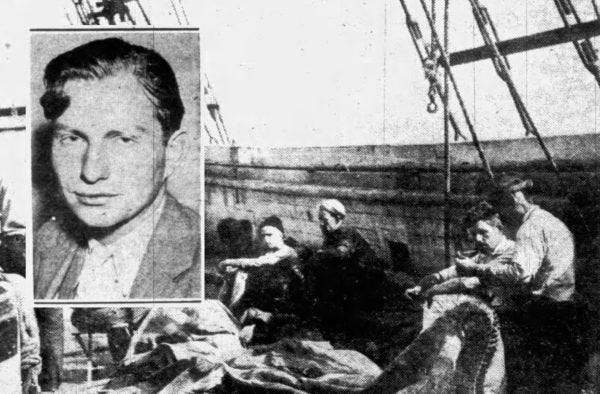
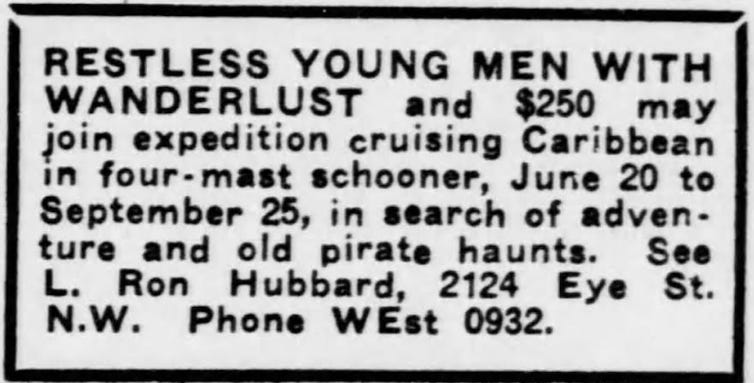
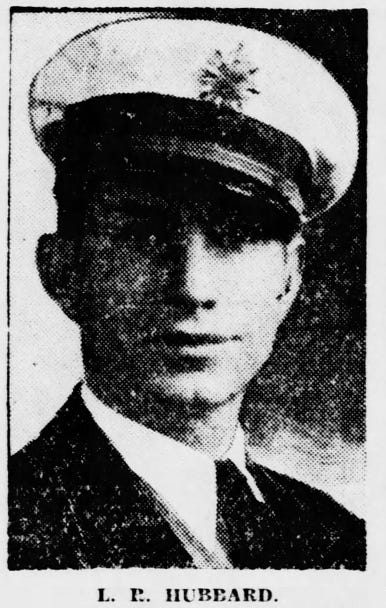
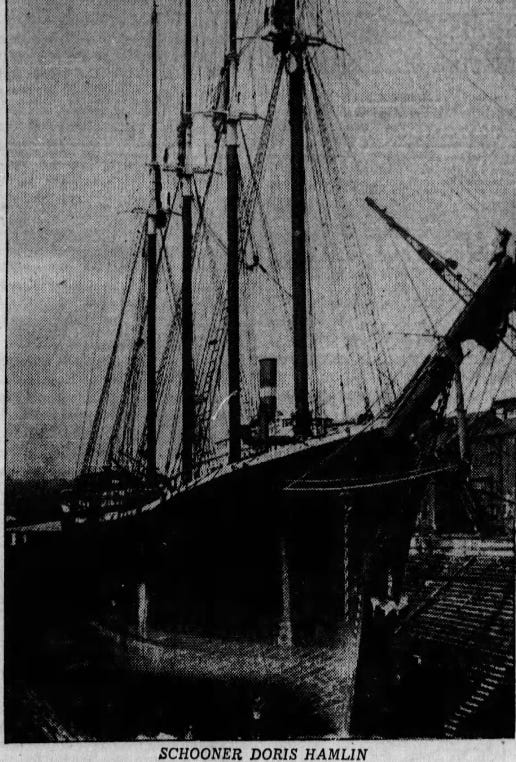
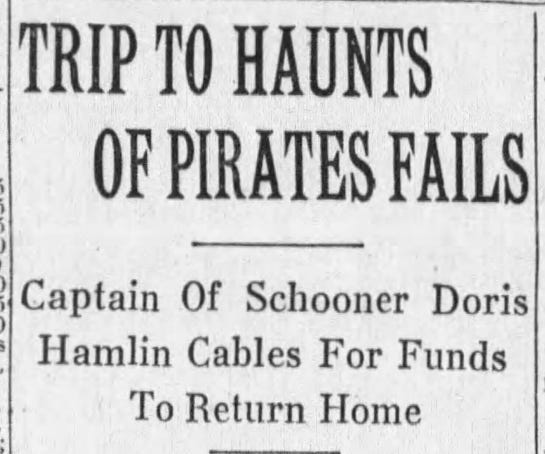
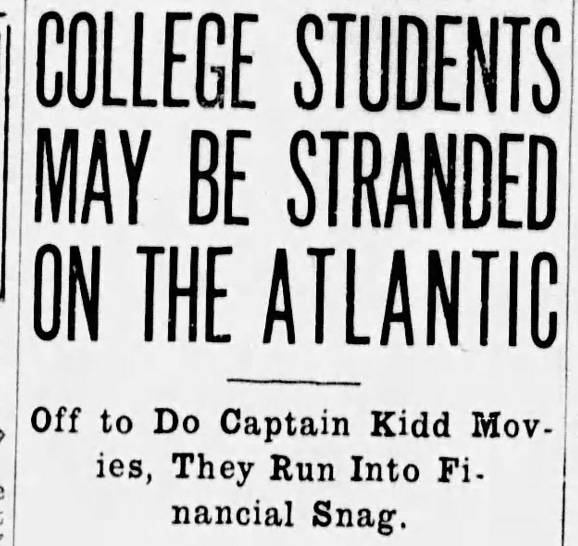
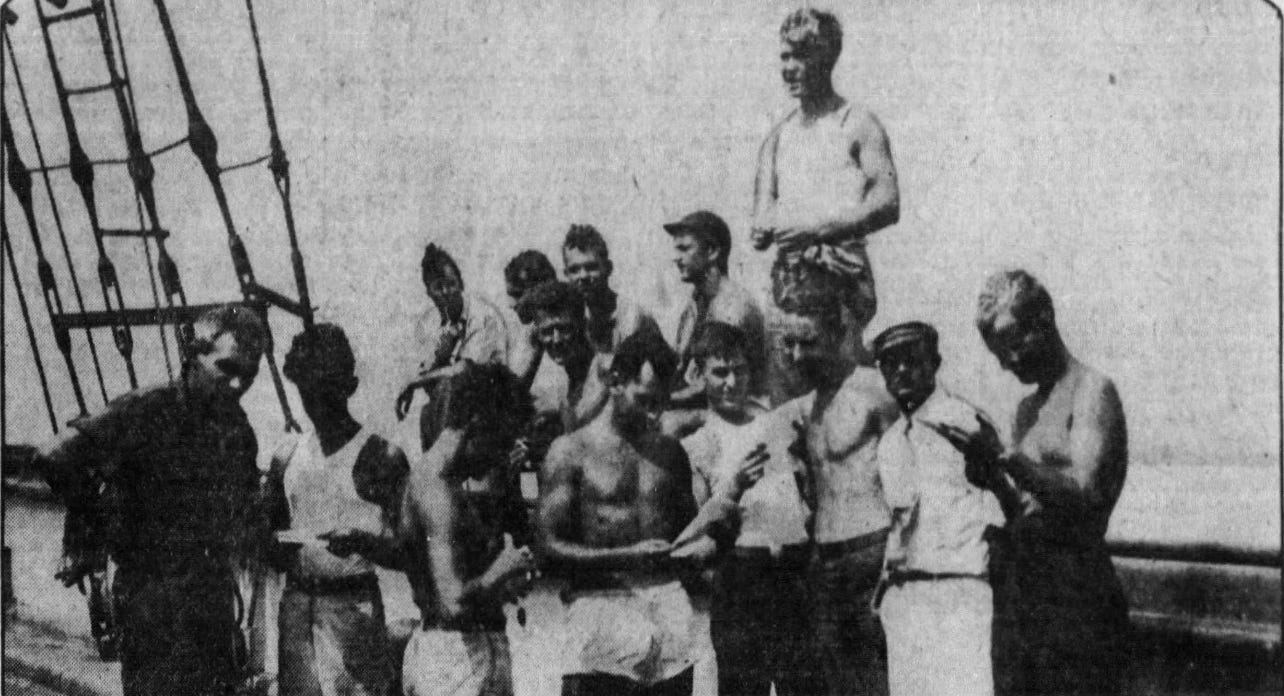
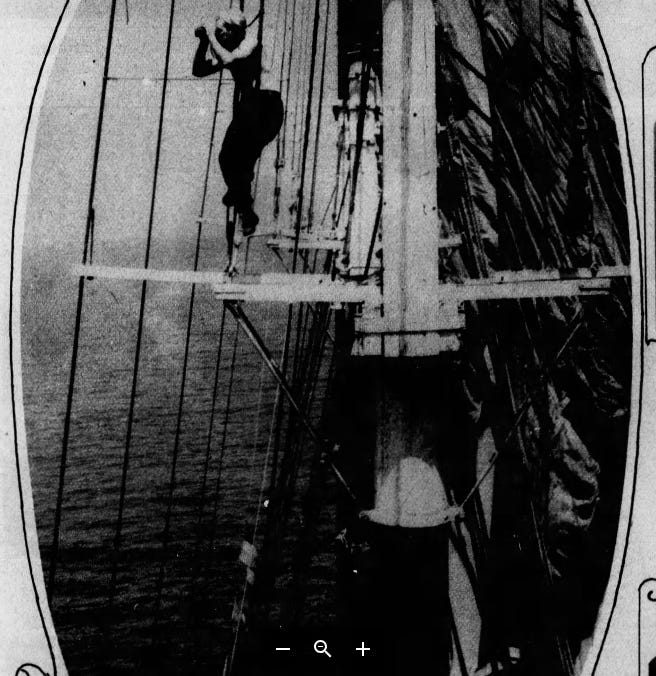
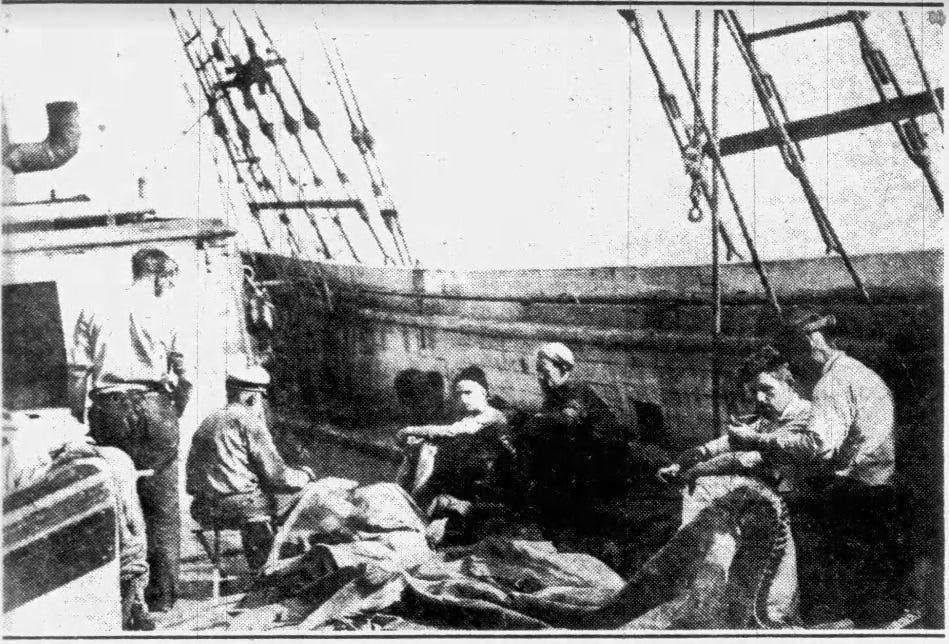
He was upset the crew wanted to actually be paid. Enough said.
Hubbard's excellent final words about the trip are the type he his whole life, including his Scientology writing years, always explaining the most crucial and difficult pivotal issues out of his explanations.
It's clear there was a difference between the hired captain's views of the most important events, and Hubbard's.
It seems Hubbard's chips on Hubbard's shoulders were non stop, his whole life, to his bitter end.
Smarter authorities saw things differently than Hubbard, and this Hubbard writing is a mirror to almost all Hubbard's other broad self justifying writings.
The ship wasn't really ready for the voyage, and the water tanks were the problem.
If "water tanks" are compared to Hubbard's "tech", then that's the story of Scientology and the Hubbard "tech" for Scientology. The Hubbard "Scientology tech (quackery)" simply is not voyage worthy for anyone to join and participate in the Hubbard Scientology stuff.
Further, Hubbard had a deep showmanship image of his Scientology enterprise. "Keep the show on the road" was Hubbard on his Scientology activity. There are countless times in Scientology admin cult bureaucracy writings where he admonishes keeping the show on the road.
"Keep the show on the road" was deep, and this first boating summer enterprise is already Hubbard keeping his show on the road attitude. Despite reality others in authority who overpower his fantasy due to serious life and death omissions Hubbard overlooked.
Hubbard didn't learn enough from this episode, obviously, and the rest of his life was just as justified slapdash as this story. (In hindsight, I so wish the US Justice Dept had done with Hubbard as they did with Mary Sue, he deserved the jail time she instead got for following his orders.)